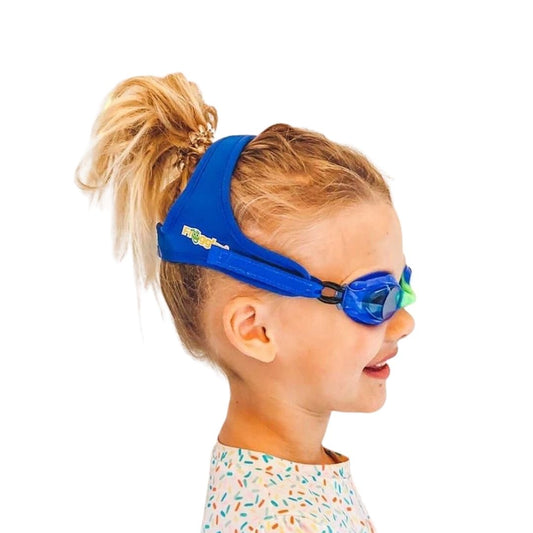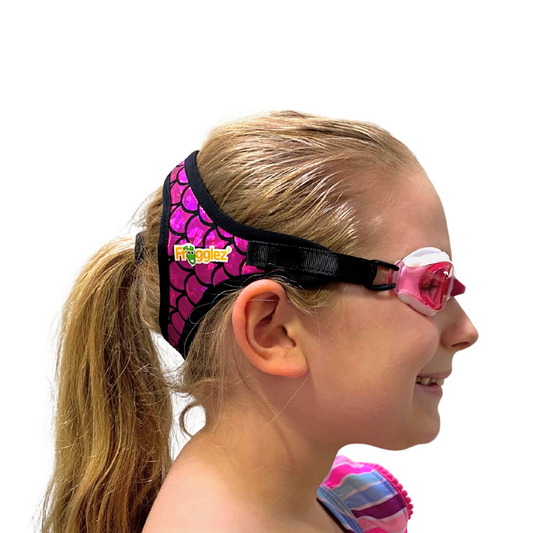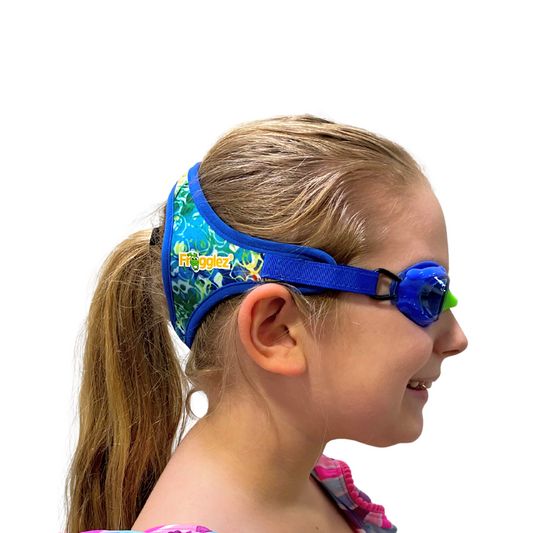If you’re not familiar with the sport, it’s a little overwhelming when your kid joins a swim team. If you’re lucky, the coach will hand you a list of required equipment. If you’re like many new swim parents, you have no idea where to start. Our family stumbled into an organized team with lists, recommendations, and lots of parents who were willing to help. Here are some tips for buying swim team swimsuits learned in my ten years as a swim mom.
Function is more important than fashion
The fashionable trunks or bikini worn to the neighborhood pool or beach won’t do the job for swim team practice. Swimming for 45-60 minutes every day requires a swimsuit with specific features.
Competition suits are made for the rigorous practice schedule of serious swimmers. Look for flat seams to limit skin irritation, an open back that allows for a full range of motion, and leg holes that provide full coverage without impinging the range of motion. Most families can find a practice swimsuit that lasts for a season for around $30.
Durability and chlorine resistance are key features
Girls need a one-piece swimsuit for daily practice. If you need an inexpensive, comfortable suit that stretches easily, choose a nylon blend. Nylon suits are lightweight, don’t absorb a lot of moisture, and fit well. Unfortunately, nylon isn’t chlorine resistant and won’t last as long as a polyester suit. To extend the life of your nylon practice suit, make sure you rinse the chlorinated pool water out of the suit and hang it up to dry after every wear. As your child advances on the swim team, you might consider switching to the more durable polyester suits that hold their color and shape even after hours of training.
Boys can choose from a swim brief or get a bit more coverage in a pair of jammers. Typically, briefs are nylon blends to give a secure fit and enough stretch to move comfortably. Jammers are just as tight, but extend down the leg almost to the knee. Both styles have a drawstring waist to keep them from moving during dives.
Choosing the right size
If you can, buy your first suit from a shop that knows how to fit them. Many urban markets have local swim shops staffed with former swimmers who can recommend a good suit. If your experience is limited to buying recreational suits, a swimsuit for swim team might look too small. After all, as parents, we’re accustomed to leaving a little room, so there’s room for a rapid growth spurt.
A suit for swim team should fit like a glove, with no visible wrinkles or excess fabric. Any gaps or extra space in the suit means it is too big. Female swimmers should only be able to fit two fingers (one on top of the other) between the shoulder strap and the shoulder. Male swimmers should be able to move freely without exposing themselves.
Swimsuits stretch over time as the fibers degrade from use, so if you buy a suit that’s too big, it will only get bigger. Baggy suits slow swimmers down (the technical term is “drag”) and make swimming harder.
Pro tip: Older swimsuits are sometimes repurposed as drag suits, worn over the regular practice suit during practice to build endurance.
Training suit sizes
Like clothes and shoes, different swimsuit brands fit all bodies differently. Much like you do with clothes and shoes, you will probably end up favoring one brand over another due to the way it fits you. The chart below is approximate, but you might need a different size to accommodate a long torso or developing curves. After you know the size and style parameters, you can venture online to find bargains.
| Swimsuit Size | Approx clothing equivalent | Approx size by age |
| 18 | Child XS or Kids 5 | 5-6 years old |
| 20 | Child XS or Kids 6-6X | 6-7 years old |
| 22 | Child S | 7-8 years old |
| 24 | Child M | 8-10 years old |
| 26 | Child M | 10-11 years old |
| 28 | Child L | 12-13 years old |
| 30 | Child L | 14-16 years old |
Competition swimsuit
Because swimsuit fabric tends to degrade over time, you might choose to purchase a special suit for racing, which should be worn only at meets. Although USA Swimming banned the $500 tech suits worn by Olympic athletes for 12 and under swimmers, having a dedicated racing swimsuit can give kids a mental advantage.
Approved for all athletes, racing suits look like practice suits, but are made from compression material designed to reduce drag, muscle oscillation, and skin vibration. The patterned fabric streamlines water away from the body and doesn’t stretch much.
If your child wears a size 24 suit for practice, consider sizing down to a 22 for competition. A racing suit should fit even tighter than practice suits and can even require assistance to pull on. Racing suits generally cost between $100 to $200 and will last through one championship season.
Welcome to the club
Ten years of buying swimsuits and various other gear teaches you a few things, but each swimmer has their own definition of comfort. Find a good quality, durable suit that doesn't rub or irritate and rinse it after practice each day in clean water. Plan on dropping a few extra dollars on a competition suit at some point, but reserve it for special meets to give it a longer life. Most of all, enjoy being part of a swim team!







